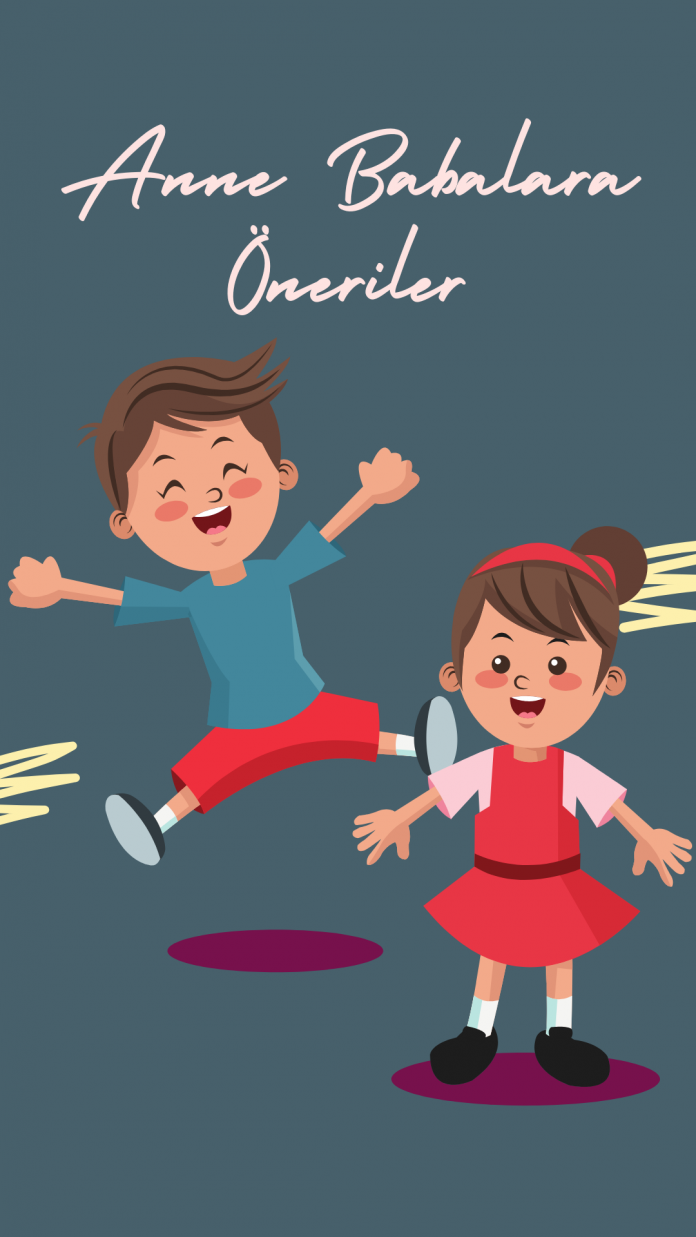Hey friends, 🙂
I think this week’s topic is very important… It is so important that instead of writing this article from scratch, I thought it would be healthier to take it from the book of Ms. Betül Aydın (Çocuk ve Ergen Psikolojisi Page.211-219), who is an expert on this topic. And I also highly recommend this book…
We all know that loving our children is very important for them to grow up happy and healthy. But how is this possible in the midst of so much chaos and hustle and bustle? Here are some suggestions:
Improve Your Ability to Cope with Stress
- Learn to relax. You may consider practicing slow and deep breathing exercises to calm your mind.
- Take a short break from your children and be alone with yourself. Take time to do something you enjoy.
- Above all, your spouse is the other partner in this marriage; create a time when you can be alone with your spouse.
- Get support from those around you; share your feelings and problems with friends, spouses, and acquaintances.
- Make a program to do activities that you enjoy.
- Go for walks and exercise.
- Get away from thoughts and opinions that are unfair to you.
- Try to control your anger.
- Improve the quality of time you spend with your child. Spend 20 minutes a day alone with your child.
REMEMBER THAT IN ORDER TO HAVE A HEALTHY FAMILY ENVIRONMENT, IT IS IMPORTANT FOR YOU TO FEEL GOOD ABOUT YOURSELF FIRST.
Control Your Anger
Fatigue, stress and the variety of challenges in life can sometimes lead to frustration. Challenging life events break down our resilience, causing us to become more irritable and angry. Because we become intolerant in tense situations, we flare up more quickly; we react more harshly than necessary. It is important to recognize our anger in those situations that lead to angry reactions.
Coping with Anger
Let’s take a look at what they are so we can recognize our anger reactions;
Reactions in the Body
- Tense muscles,
- Increased breathing and heart rate,
- Sweating
- Reddening of the face,
- Flushes of fever
Thoughts that haunt the mind
- I can’t cope,
- I hate it,
- I’m done,
- This child is driving me crazy, infuriating me… etc…
Outcome Behaviors
- Yelling, threatening,
- Using violence,
- Negative behaviors like humiliation.
Have a special time to spend with your child!
At the end of a busy day or at a time that is convenient for you, set aside some positive time to spend with your child. Schedule this time.
1) Sequence The Activities
Make a list of half-hour activities that you and your child like to do together. Let your child propose this list of activities.
For example: doing something together (baking a cake, playing ball, chatting, going for a short drive in the car, painting, tinkering, etc.)
2) Make An Appointment
Make an appointment for 30 minutes 2 or 3 times during the week that suits you and your child to do the activity you identified together in the previous step. Once you have set the time, mark it on the calendar (day and time). When something else comes up, change the schedule and mark it again.
3) Let Your Child Lead the Game or Activity During Activities
Let your child be in the foreground, the one driving the situation. Put him in the foreground. Be the person who is guided by him/her. Give your child the opportunity to be a leader. Be the positive feedback person.
Give positive verbal feedback
- “This looks very good.”
- “You did a good job.”
- “Very good, well done.”
- “That’s great.” etc…
Define what they did
Define what the child is doing, feeling, experiencing.
- “You caught the ball.”
- “You look happy.”
- “You’re joking.”
- “You seem to be thinking.”
- “You’re exploring your toys.”
- “You’ve won.” etc…
Make skin-to-skin contact during the event
- Give him/her a hug.
- Caress.
- Kiss and smell.
- Touch his shoulder, his head.
DURING THE INTERACTION, AVOID QUESTIONS, GIVING COMMANDS OR NEGATIVE CRITICISM
Sample phrases that should not be said
- “Why did you catch the ball?”
- “Put your toys in that corner.”
- “That’s not right.”
4) Review and EVALUATE your time together. Share your feelings after the activity.
PAY ATTENTION TO YOUR CHILD’S POSITIVE PLAY BEHAVIORS!
It is important to highlight your child’s positive play behaviors. This process consists of the following steps;
- Set a special playtime (if your child is under 9 years old). Choose a time each day when you will have a special time with your child. During this special playtime, spend 20 minutes completely devoted to your child without thinking about anything else.
- No one else should participate in this playtime except you and your child. Even your other children and your spouse should not participate in this special time.
- When it is time to play, remind and ask, “Come on, we have a special time to play. What would you like to play?” It is important that it is a game that your child chooses and that you can play together. Make sure it is an activity other than watching television. Leave the control of the game to the child.
- Try to enjoy this moment. Watch and participate in what your child is doing for a few minutes at a time. Focus all your attention and interest on your child. Try not to think about anything else during this time.
- After you have watched your child play, describe what your child has done. This is a behavior that shows that you find your child’s play interesting.
- Do NOT ask questions or give orders. Do not try to teach your child anything during play. This is a chosen time for your child to relax and enjoy your company.
- Express what you like about the game. Give positive feedback. Use positive statements such as “I really enjoy this special time together”, “You did that very well”.
Tips For Communication Skills In The Family
- Use short sentences, no more than 10 words. Long speeches are not effective.
- Use body language. Do not use incriminating language.
- Make sentences with clear and precise expressions
(e.g. “Stop fighting, stop fighting”). - Do not use negative interrogative sentences
(“Why do you always fight?”, “How many times should I tell you not to do that?”, etc.) - Let your body language show that you are a good listener. Don’t forget to make eye contact and do not look away when the child is trying to tell you something.
- Have enough time to listen to what everyone wants to say. Do not interrupt them.
- Focus on the here and now, do not bring up the past.
- Do not jump from topic to topic.
- Be sure of what the other person wants to say. Don not be a mind reader or guesser.
BEING A GOOD LISTENER SOLVES THE PROBLEM SIGNIFICANTLY
The feelings behind what children say and do not say are important. Reflecting the child’s feelings and clarifying them in communication is an effective communication method.
| What The Child Says | Reactions Of The Adult |
| I don’t want anything to do with him again. | You seem angry with him. |
| I want to get out of the folklore club | You think you don’t play folklore well |
| I’m going crazy in this house. | You seem so angry with us. |
| I don’t want to go to my aunt’s. | You’re worried that “Okan” will make you angry. |
I Messages
“In the evening, when you feel tired from the day, you want to watch the tv show that interests you. But the way the children listen to music prevents you.”
In such a situation, you are the victim. You cannot watch TV comfortably because of the noise.
What do you do?
In such situations, shouting, threatening, punishing are only temporary solutions.
However;
- Explain and describe the behavior that is holding you back. But do not blame.
“When you listen to music at such a high volume … …“ - Describe how the behavior makes you feel at the end.
“… … … I feel very uncomfortable … …“ - Explain the consequence of the behavior.
- “… … … I cannot watch the tv show… …“
- “I can’t watch the program that I miss with so much noise.“
- “Toys are scattered all over the room, I can’t clean up.“
I messages are statements about you, about you, not about the child.They are not blaming the other party.
In cases where the child is the victim, use “REFLECTIVE LISTENING” to understand and clarify the child’s feelings.
In cases where you are victimized, express your feelings with “I MESSAGES”
Organize Special Family Meetings
- Meet regularly with all members of the family at prearranged times.
- In the beginning, keep the meetings short and simple. Children are ready for this experience when they can express themselves.
- You can use the question “What shall we do on the weekend?” to make it easier to start the meeting.
- Rotate the chairperson of the meeting. Create a democratic environment.
- Plan the time. Meetings of 20 or 30 minutes are ideal for families with young children.
- Encourage everyone to participate.
- Include questions from each member. Take suggestions and ideas seriously. But don’t let meetings turn into a complaint session.
- Brainstorm. Listen to different opinions.
- Make decisions together and make sure that these decisions are put into practice.
Don’t Be A Prisoner Of The Social Media
The television and the internet, which are among the most effective means of communication, can hinder intra-family communication when used inappropriately and in moderation. It blocks the necessary contact and psychological support between family members. In this sense, television and computers should not be more than a tool for both adults and children. They should be with a specific program and selectivity.
- Remember that you cannot watch every program during your child’s awake hours, you need to be selective.
- The television should not be like a member of the family and should not be kept on all the time.
- Do not put a television in your child’s room. Having a television in the playground or workspace can be provocative. Likewise, do not put a computer in the rooms of young children. Do not put a computer in your child’s room until he or she has developed the habit of studying, taking responsibility and time management.
- Ask the babysitter not to turn on the television until a certain time during the day. Ask them to tell the child a story, a fairy tale or play a cassette tape. Also, encourage him/her to play with various toys or activities and/or ask him/her to participate in these activities.
- Determine the programs that your child should watch and, if possible, watch them together and have discussions about the program. Make explanations about images of blood, fighting and aggression. For example, say “They always use paint to make it look like blood”, “They pretend to be hitting, but they are not actually hitting”.
- Allow him/her to have access to these devices, both television and computer, at a time and on a schedule planned together in advance.
Please share your thoughts with me.


